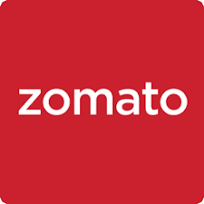sushi san francisco fillmore street

Original Buffalo Wings (SF), San Francisco Best of Thai Noodle, San Francisco Monterey Deli, San Francisco Little MadFish, Redwood City Indian Oven, San Francisco Gangnam Chicken, San Mateo The Stuffed Inn, Berkeley Yumma's Mediterranean Grill, San Francisco Polkers Gourmet Burgers, San Francisco Sajj Falafel & Shawarma, Menlo Park Nick's Cafe, Los Angeles 201 Mission Taqueria, San Francisco Buri Tara Thai Cuisine (Foster City), Foster City Seven Seas Sushi, San Jose Roger's Deli, Mountain View Thai Idea Vegetarian (Polk St), San Francisco Noori Pakistani & Indian Cuisine, San Francisco Ayola (Kearny St), San Francisco Joy Sushi (Mountain View), Mountain View Banana House, San Francisco Western Addition is a mostly residential area of San Francisco, stretching west from downtown's Civic Center area to the Arguello Boulevard, north of the Panhandle parkway that extends east from the Golden Gate Park between Oak and Fell Streets, and south of California Street.

Nihonmachi, also known as Japantown, the Japan Center, and Little Osaka, is a neighborhood of the Western Addition that is roughly within the confines of Sutter Street to the north, Geary Street to the south, Fillmore to the west and Laguna to the east. It is one of only three Japantowns left in the continental United States — others are in Los Angeles and San Jose. Nihonmachi was formed after the 1906 San Francisco earthquake and fire.
where to buy sushi rice in torontoMost Japanese immigrants entered the United States through San Francisco and many settled either south of Market Street or in the Chinatown area.
online food delivery manila credit cardWith the 1906 earthquake, Nihonmachi, for a time, became home to the largest Japanese-American community in the United States.
sushi in mississauga all you can eat
When World War II broke out, U.S. government took Japanese Americans into custody and interned them in concentration camps. As many large sections of the neighborhood remained vacant, the void was quickly filled by thousands of African Americans who had left the South to find war-time industrial jobs in California. Following the war, some Japanese Americans returned, and the city made efforts to rejuvenate the neighborhood. Most former Japanese-American residents of San Francisco chose not to return after the World War II related relocation, and the largest Japanese-American community in San Francisco today can be found in the Sunset neighborhood.
pesce per sushi e sashimi Japantown was also negatively impacted by redevelopment in the 1950's with the widening of Geary Boulevard resulting in the destruction of dozens of Victorians.
jual sushi online jakarta
During the massive redevelopment initiated by Justin Herman in the Western Addition in the 1960s through the 1980s, large numbers of African Americans were pushed west towards the Fillmore neighborhood, east towards the Tenderloin, or south towards Hunters Point where the majority of the city's African American population resides today. Some Japanese returned, followed by new Japanese immigrants as well as investment from the Japanese government and Japanese companies.
sushi in dublin californiaNihonmachi remains a social and shopping center for the city's Japanese-American population.
buy fresh sushi grade fish Hayes Valley is generally considered to be the area around Hayes Street from Fillmore Street on the west to Gough, Franklin, or Van Ness on the east. Northward and southward, it extends a few blocks away from Hayes Street in either direction.

Hayes Valley is getting rapidly gentrified. It has a curious mix of boutiques, high end restaurants, hip stores, condominiums, and Victorians coupled with public housing and some mixed, probably one-time rough, neighborhoods. At one time the Central Freeway ran though the neighborhood, but it was closed and later demolished after the 1989 Loma Prieta earthquake. In 2005, a section of the freeway branch from US 101 was rebuilt to exit at Market Street, with a boulevard running north from the exit at Market Street through the Hayes Valley along Octavia Boulevard to Hayes Street. Map of Western Addition This part of town is very accessible by car and public parking lots are abundant compared to the surrounding neighborhoods. When coming by car from U.S. 101 towards the Golden Gate Bridge one gets on Octavia Boulevard after Market street. It is important to escape the main traffic flow by turning east or north. There are also taxis readily available at almost all hours on Fillmore and Geary Streets.

Though street parking can be slightly easier to find than many other areas of the city, you should still allot 5 or more likely 10 minutes to your search for a space. There is abundant public paid parking at the Kintetsu Mall garage (discount with validation from mall and Japan Center merchants) - and limited street parking. To park your own car it may be wise to go a few blocks further to the Civic Center just to the north and east, where there some parking garages and lots. Most restaurants provide valet parking. Several bus lines [1] from downtown run through Western Addition, including the 2-Clement, 3-Jackson, 5-Fulton, 21-Hayes, 31-Balboa and 38-Geary (and the 38L Geary Limited) bus lines. Running north-south through the neighborhood are the 22-Fillmore, 24-Divisadero, and 43-Masonic lines. That picture postcard view from Alamo Square The Peace Pagoda in Japantown There are many, many noodle shops and restaurants to explore in Japantown. There's also some fabulous BBQ along Fillmore Avenue south of Geary, in this traditionally multicultural part of town.